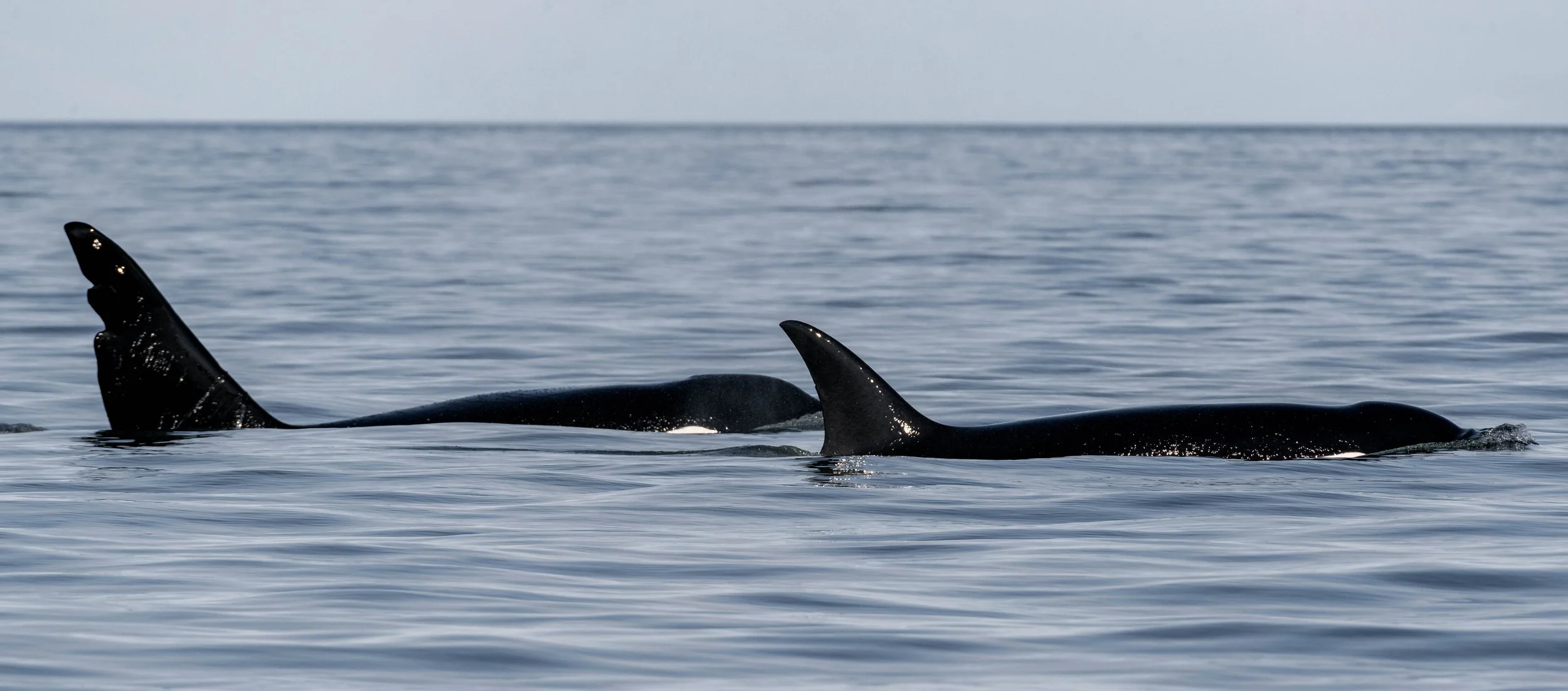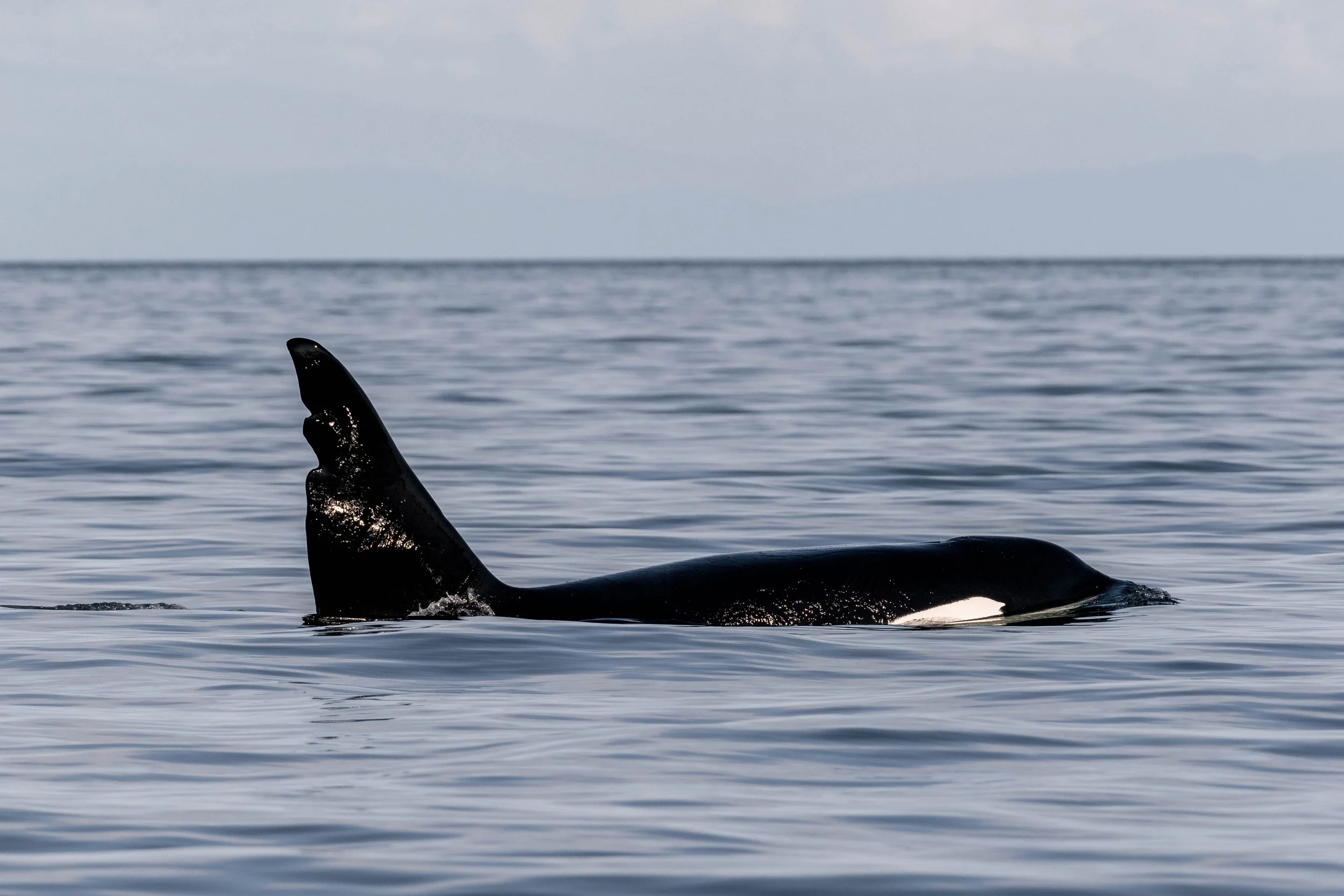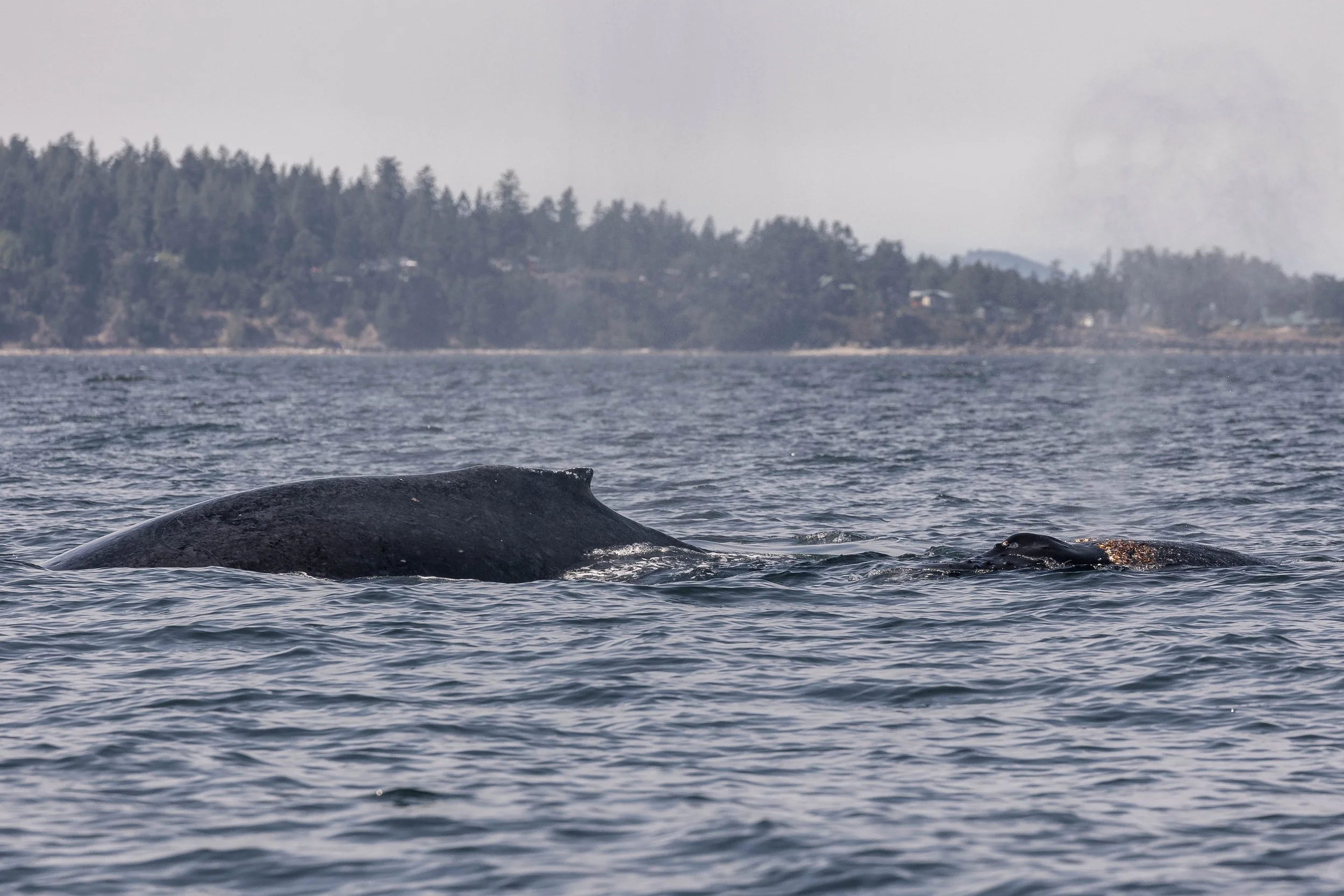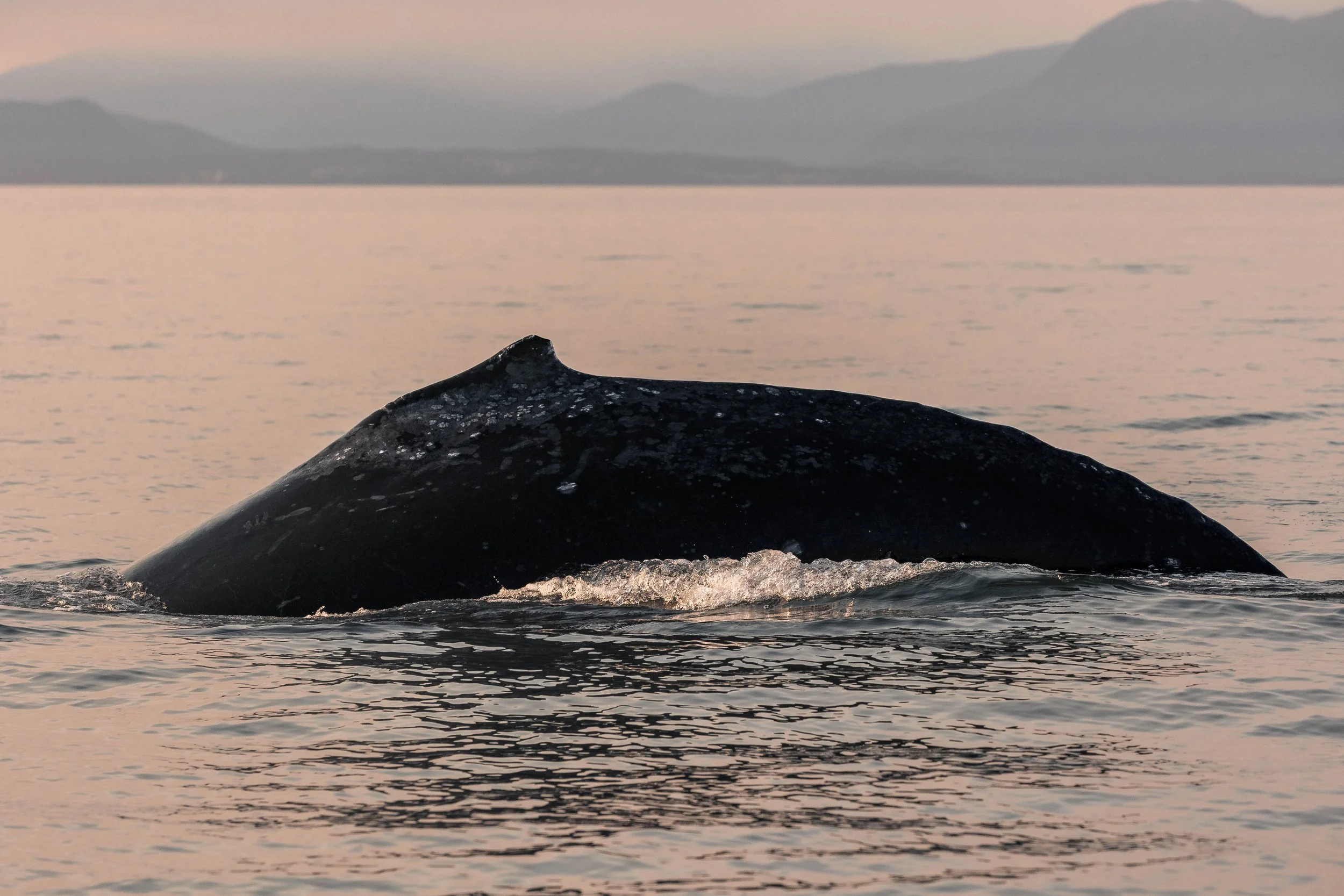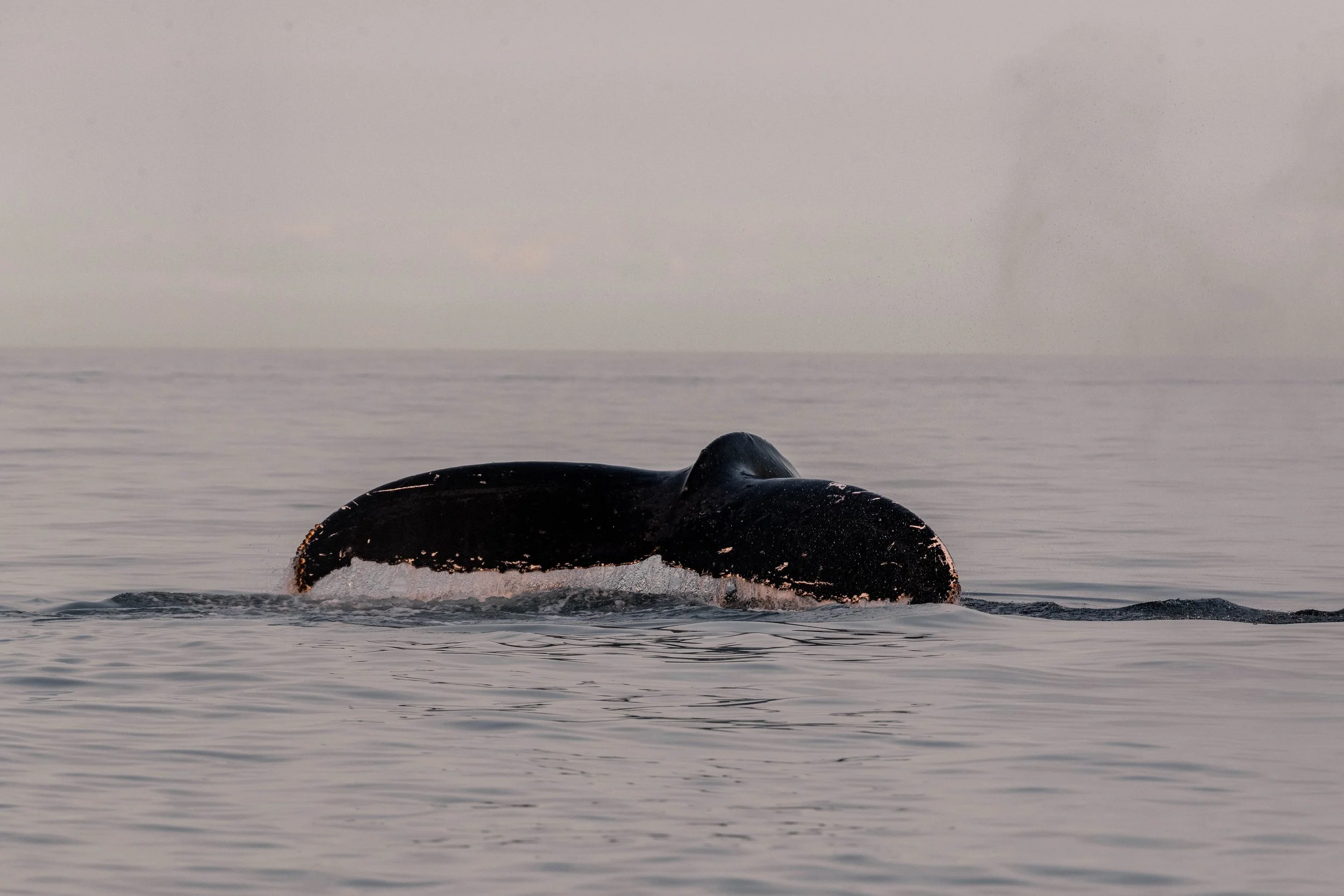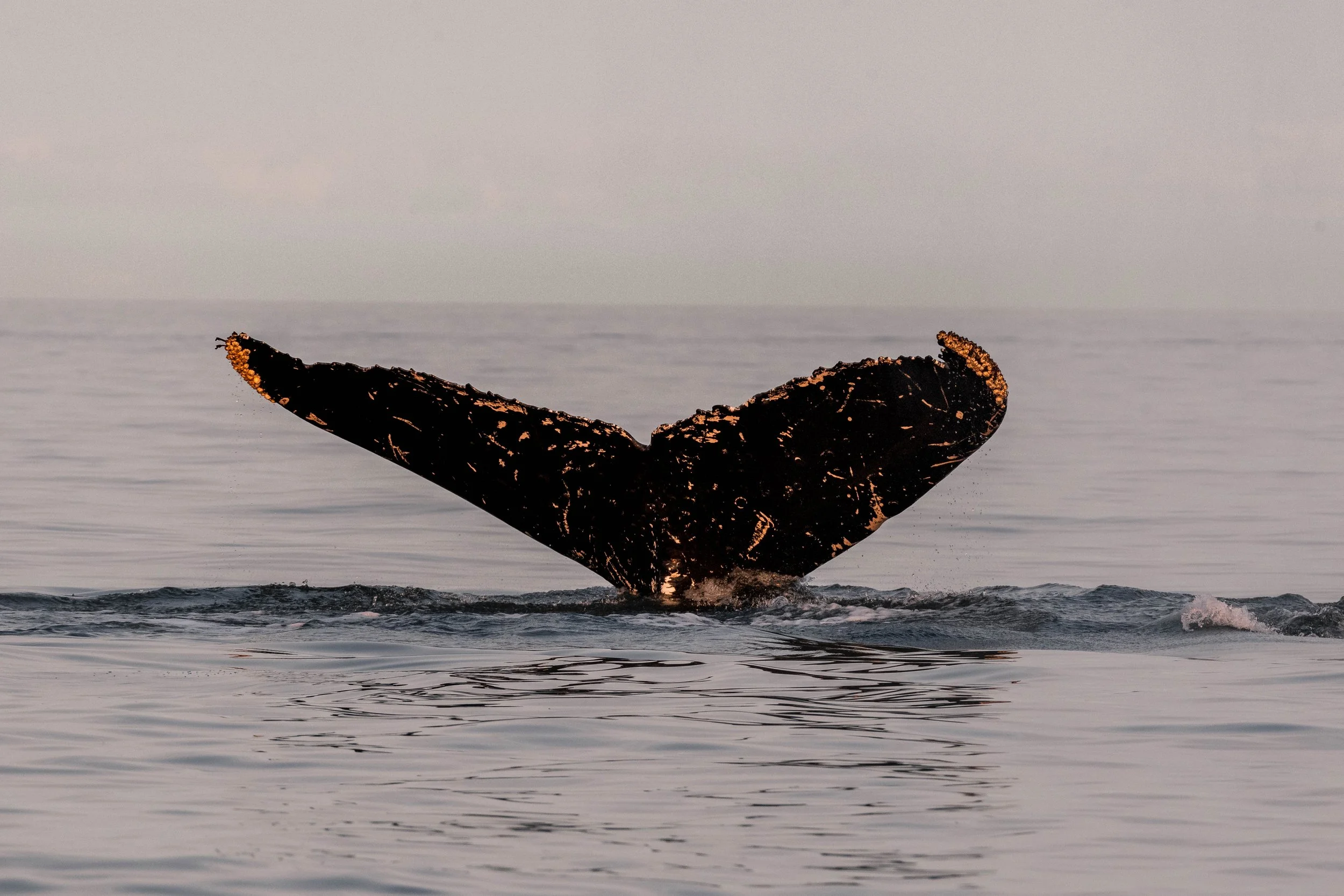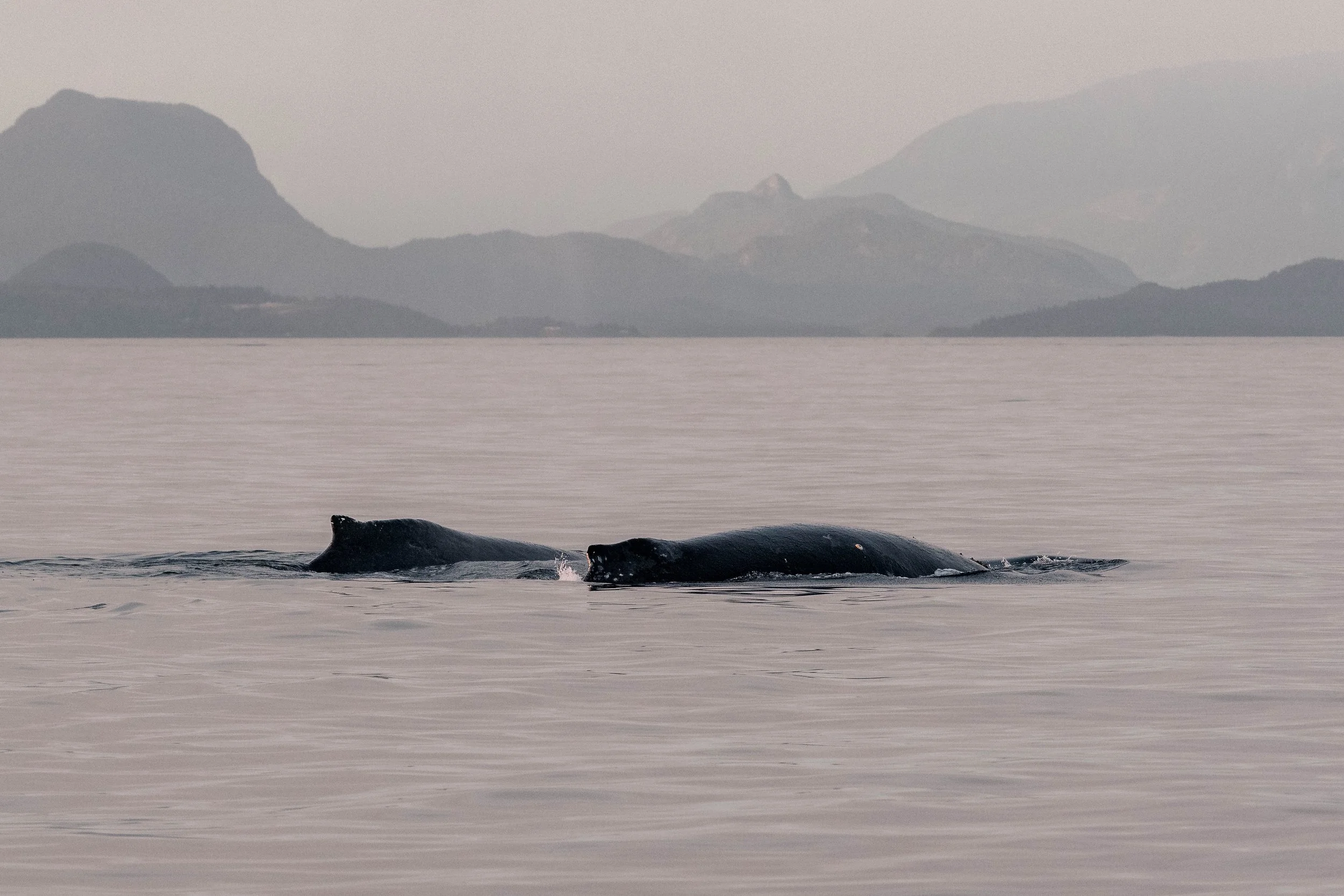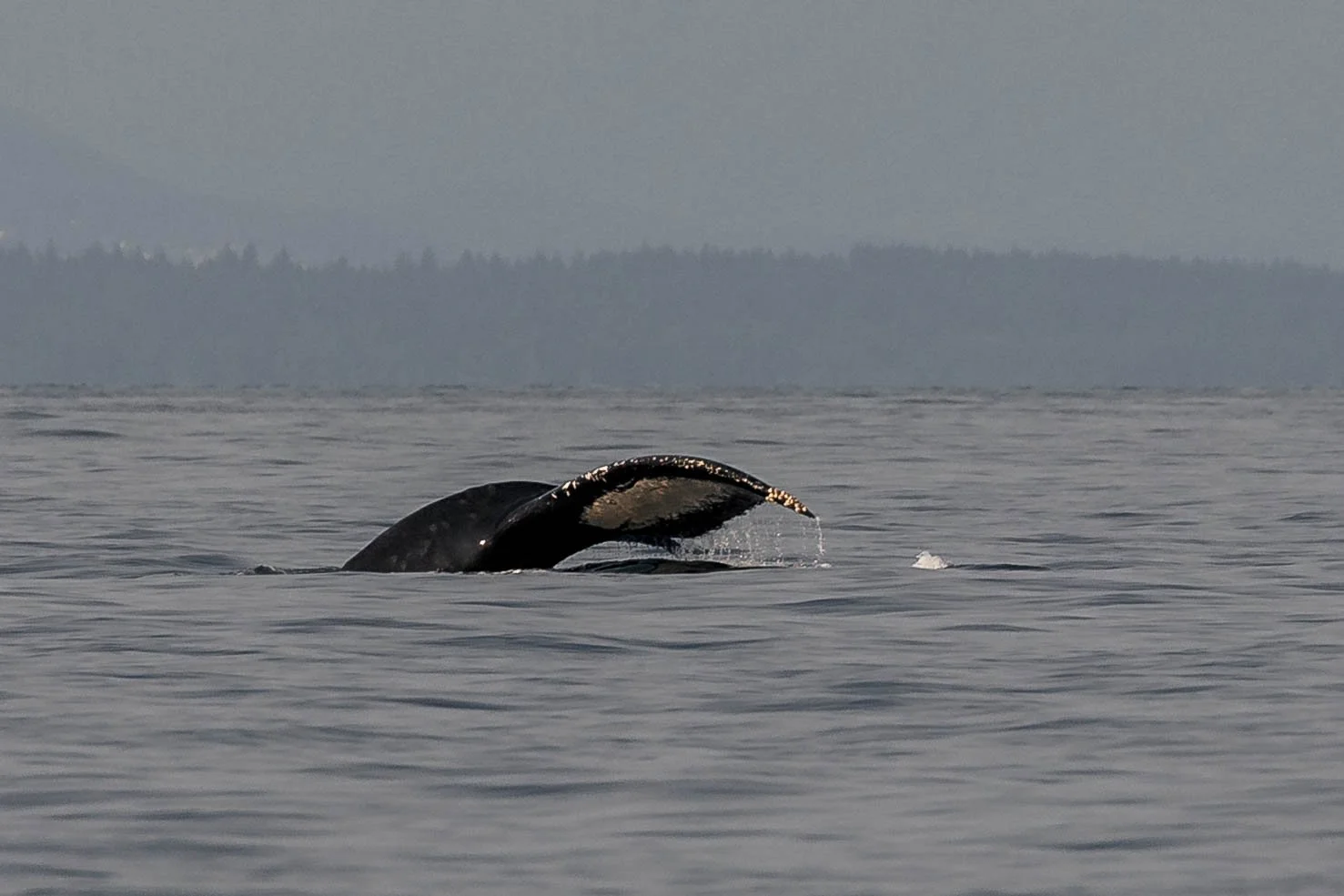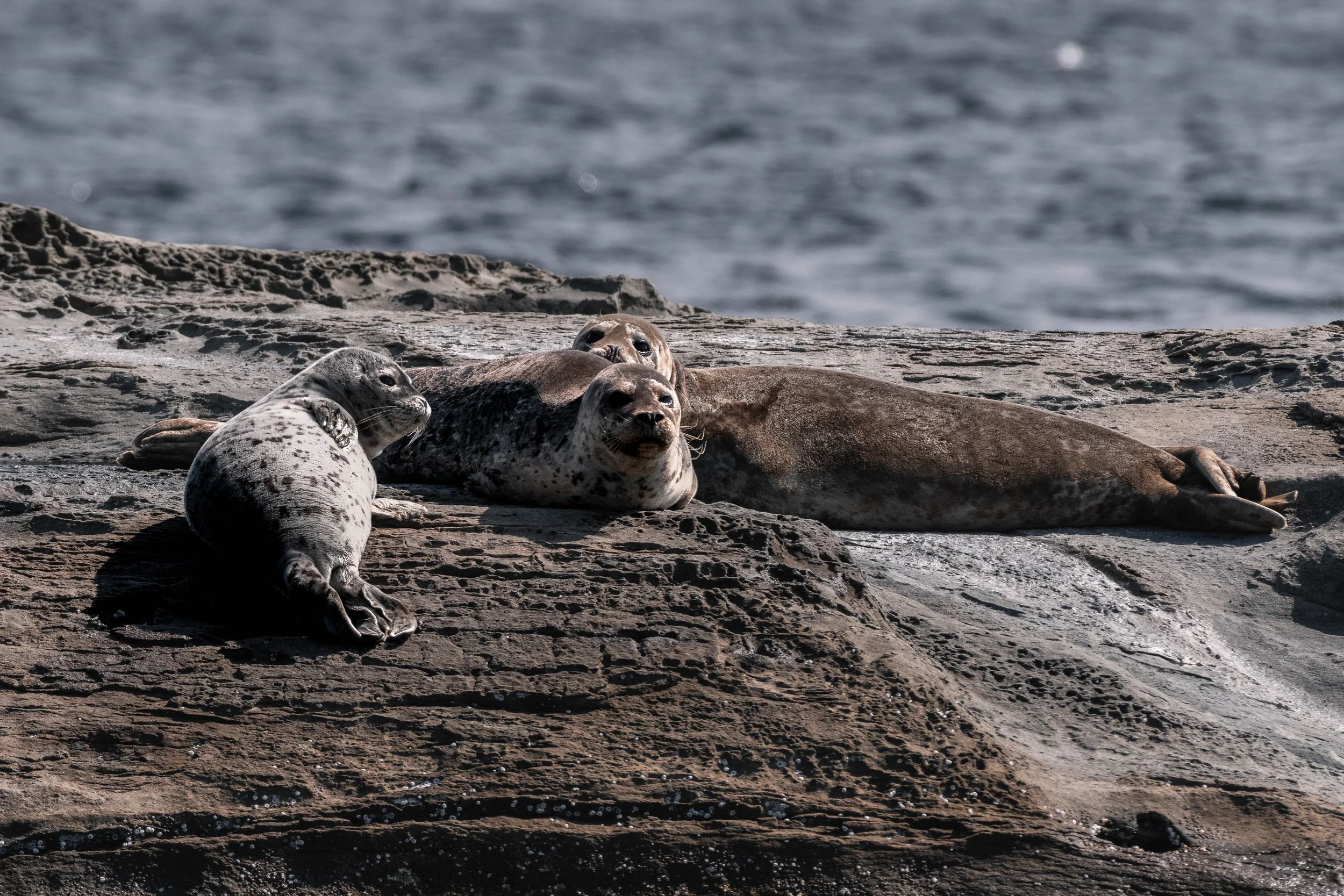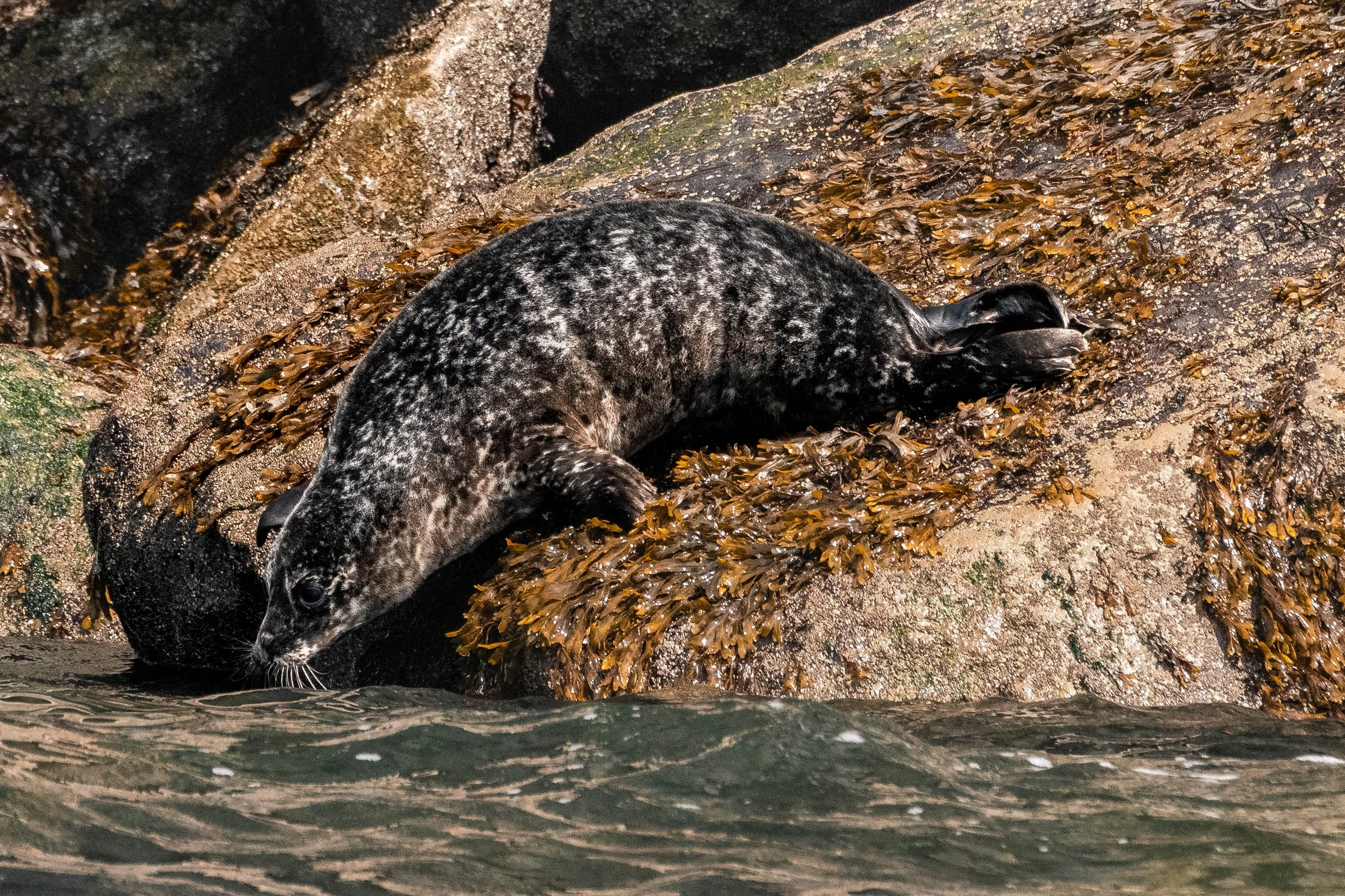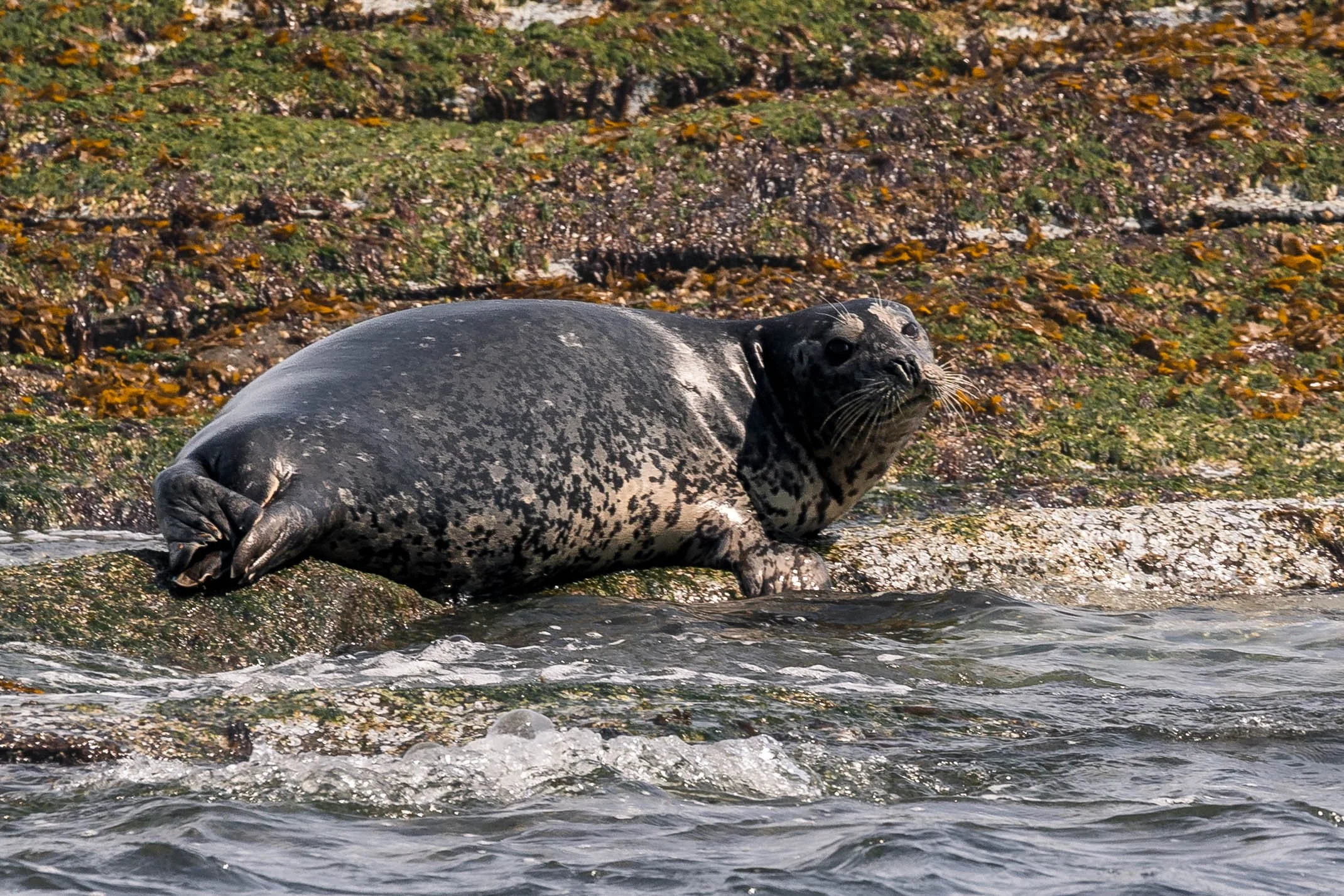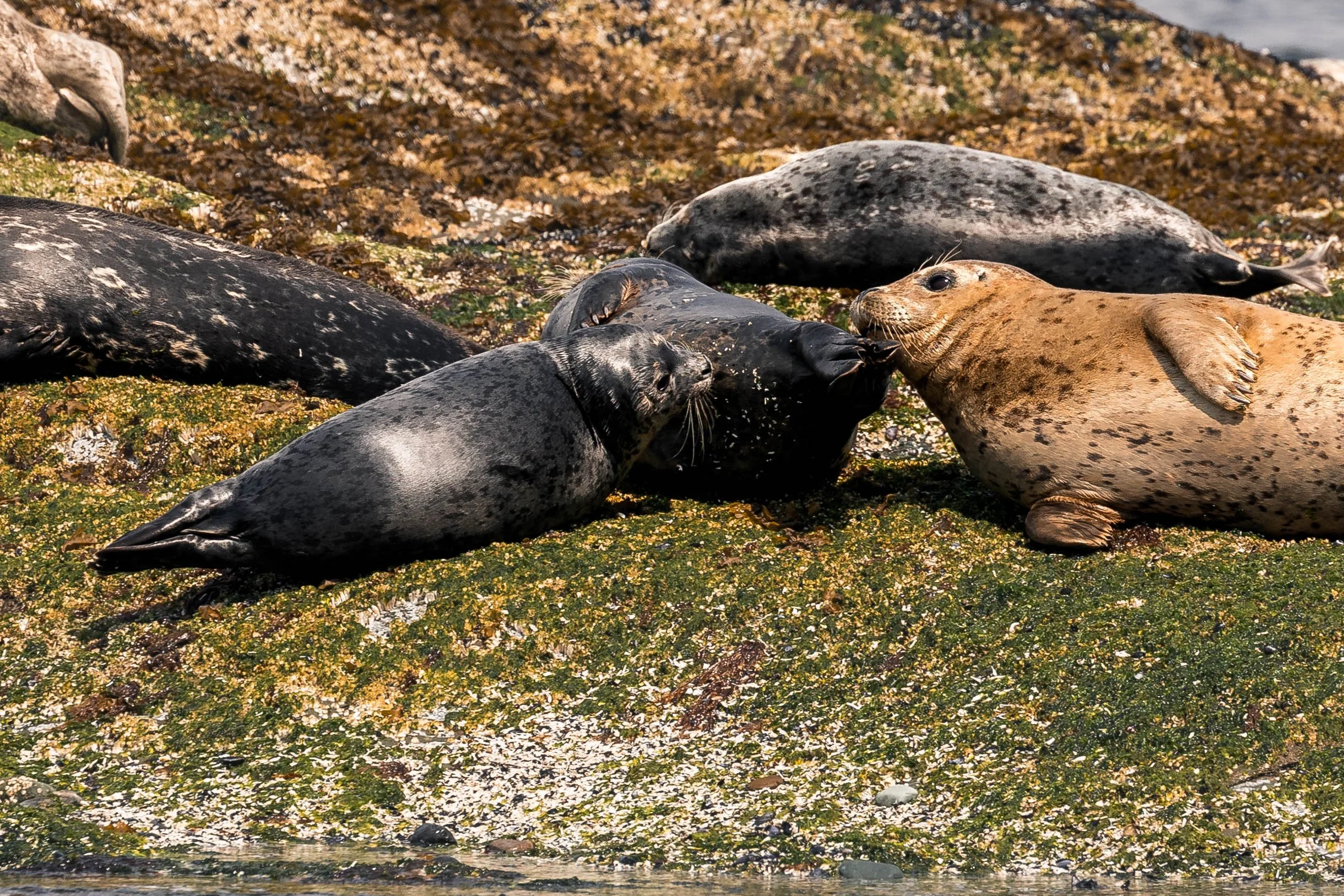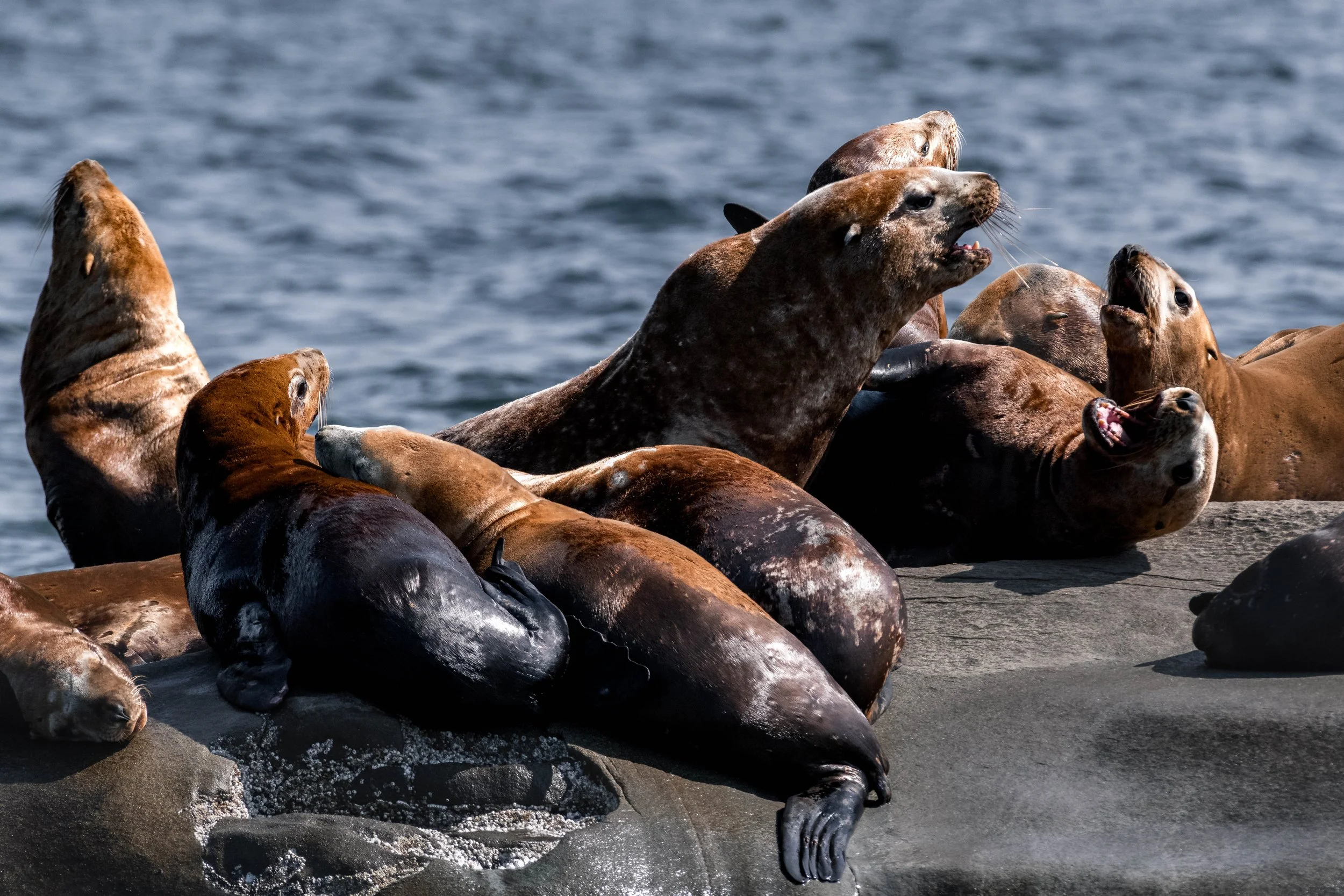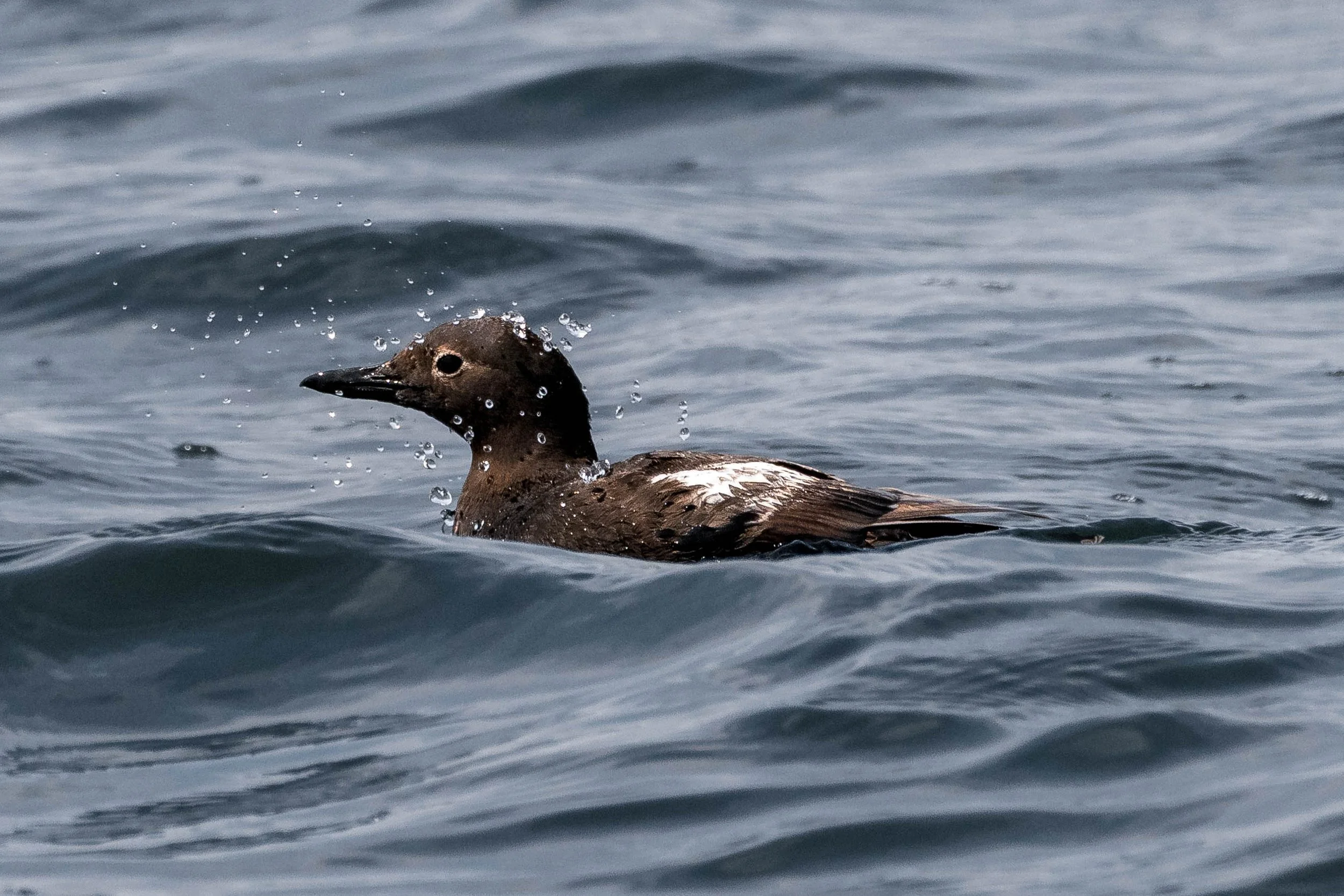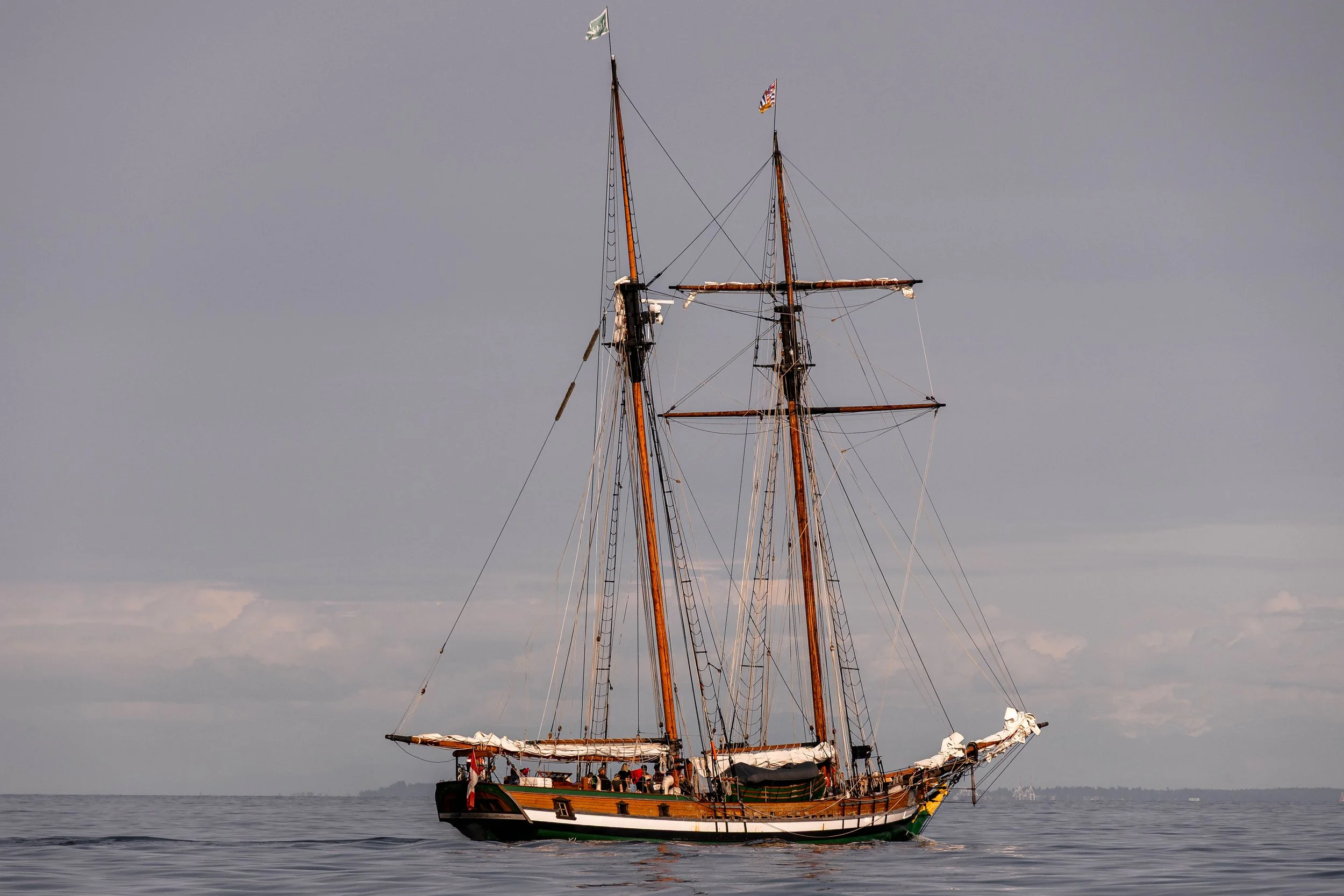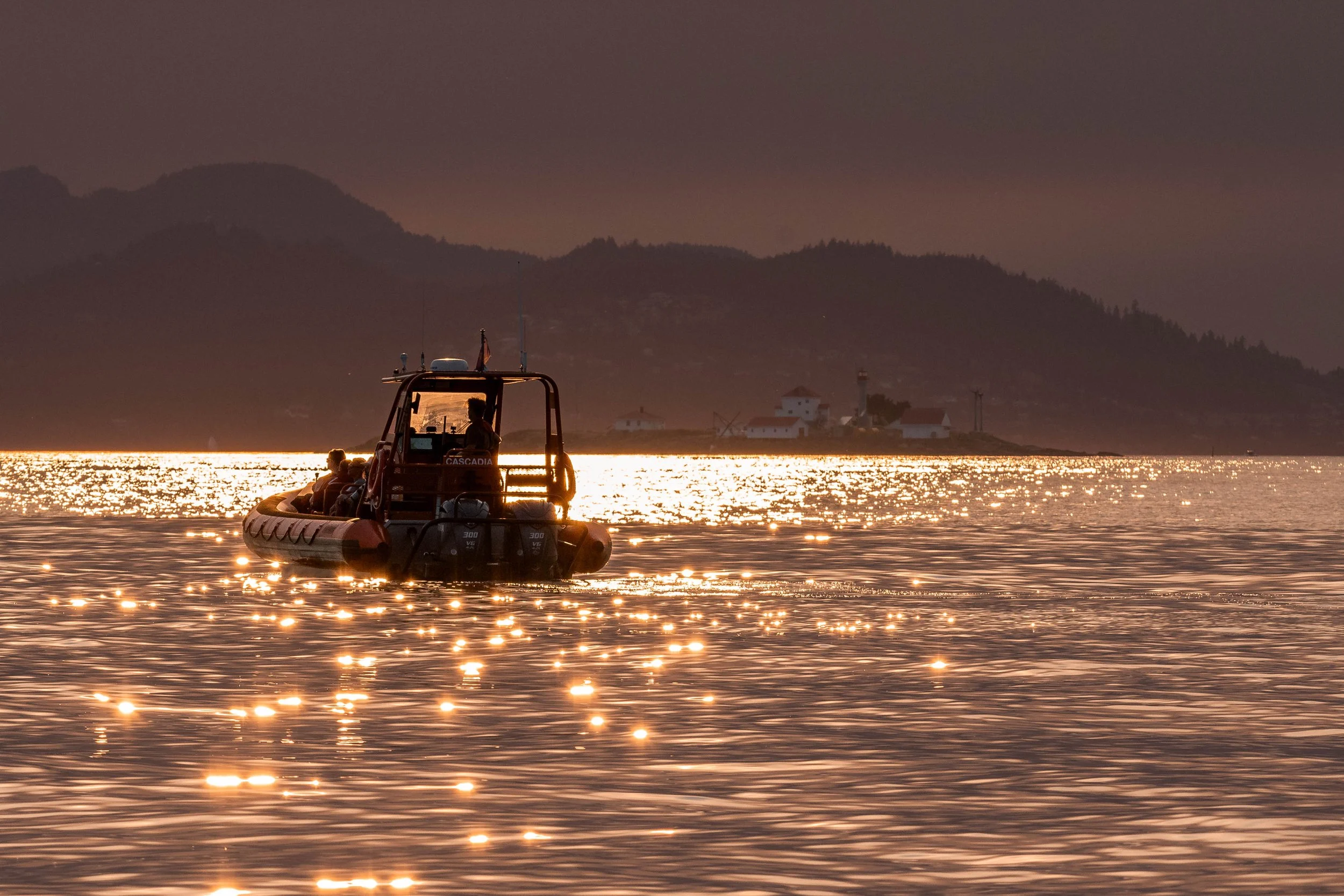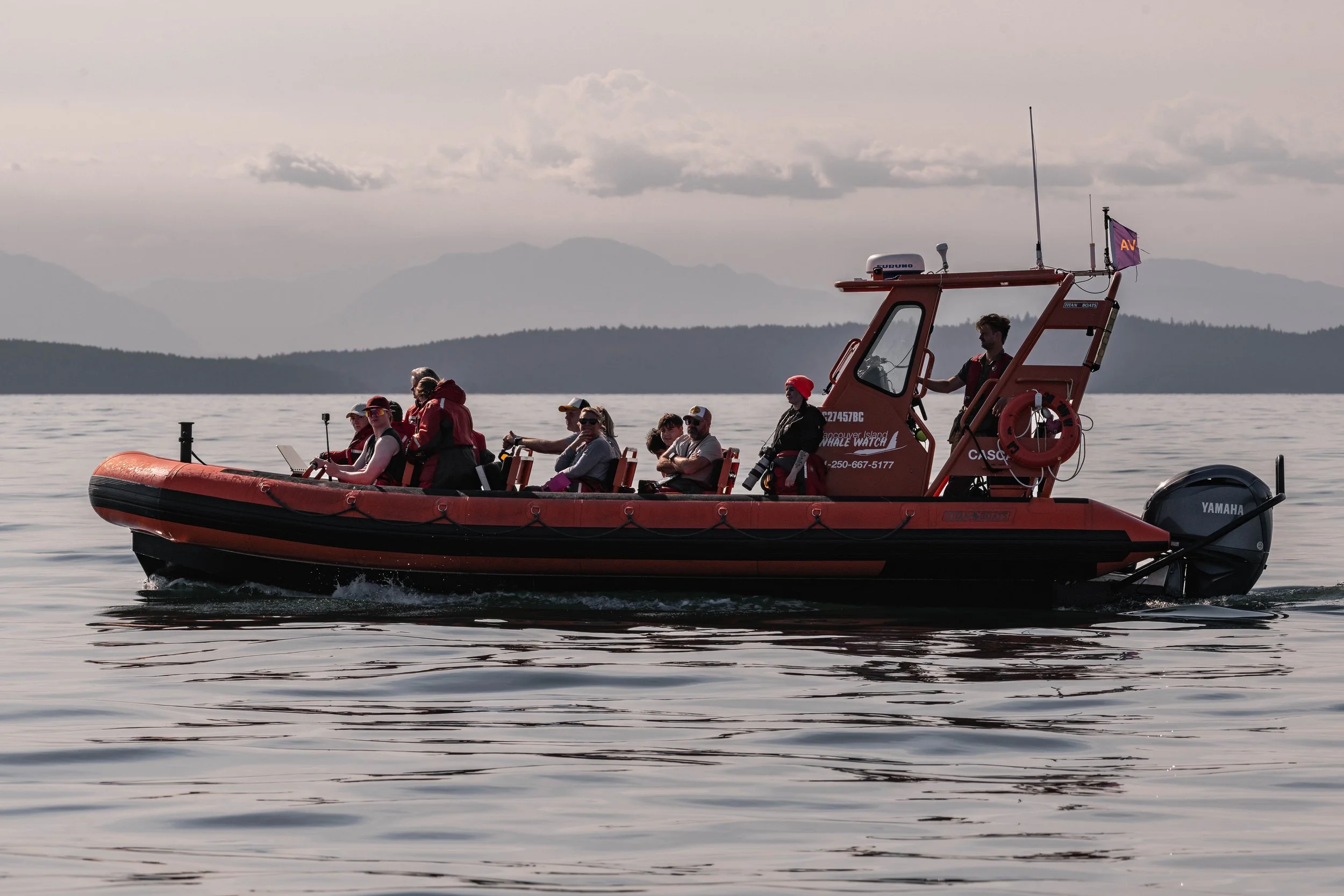August 13, 2025 - Double Species (Orca and Humpback) in the Salish Sea!
On this beautiful day, our whole fleet pushed off the dock! Vessels Keta, Kula, and Cascadia set into the Salish Sea in search of some wildlife. Our 10:30 AM and 3:30 PM boats cruised along into the Strait of Georgia to look for spectacular cetaceans, and it didn’t take long! Shortly after arriving offshore of Gabriola Island, some blows had been spotted! Our morning tour spotted some humpback whales! These humpbacks turned out to be Smoke (BCX2183), Kappa (BCX0158) and her 2025 calf Kappiroto (2025 Calf of BCX0158). Additionally, Bond (BCX1640) and an unidentified friend were milling about, but both of them were too shy to show us their tail flukes! We confirmed Bond by their dorsal fin, and we are attempting to identify their friend right now.
Kappa and Kappiroto have been regular visitors to our area throughout the summer! Kappiroto was born in Maui, Hawaii, at Kappa’s southern breeding grounds. Together, they’ve travelled over 4,000 kilometres (2,500 miles) to reach their summer feeding grounds here in British Columbia. As winter approaches and our waters grow colder, they’ll make that same journey south again. In summer, our local sea temperatures range from 10-13°C (50-55°F), but they can drop as low as 7°C (45°F) in winter. Since humpbacks are warm-blooded mammals like us, they must maintain a core body temperature of about 37°C (98.6°F). Staying warm in colder waters requires a lot of energy, which is one of the reasons why these whales migrate to warmer seas during the winter months. Whales use blubber to store energy and keep themselves warm, so these highly migratory cetaceans need to feed as much as possible during their time here. This is because when they migrate south, they won’t be feeding for the entire migration until they return here next season! Each humpback is eating upwards of 3,000 lbs (1.5 tons!) of food each day to restore its fat reserves before it migrates.
Smoke, Kappa and Kappiroto were seen travelling together and surfacing before fluking as they headed down for their deeper dives. Humpback whales dive around 200ft (61 meters) to feed, but can reach depths of 700ft (213 meters)! They dive down to feed mainly on krill, small shrimp-like crustaceans, but also feed on small schooling fish or copepods. Humpback whales don’t have teeth; instead, they use baleen plates to filter their food from the water. These plates, which can grow up to 2.8 feet (85 cm) long, line both sides of the upper jaw like the bristles of a giant brush. Each humpback has around 300 plates per side, working together to trap prey as water flows through. Along the underside of their chin and belly, humpbacks have long grooves called ventral pleats. These pleats expand like an accordion, allowing the whale’s mouth to stretch wide and take in an enormous gulp of water, as much as 70 bathtubs full at once! The whale then uses its tongue to push the water back out, while krill and fish remain caught on the baleen, ready to be swallowed.
Not far in the distance, some more small blows had been spotted. Upon further inspection, each blow was accompanied by tall black dorsal fins. Our vessels had found some killer whales! It didn’t take our naturalists long to identify which orcas were present due to the distinctiveness of their dorsal fins. It was none other than Chainsaw (T063) and Whidbey Ⅱ (T065). This pod of transient orcas are iconic because of Chainsaw's unique dorsal fin!
T065 Whidbey Ⅱ ♀ (<1968)
T063 Chainsaw ♂ (~1978)
These Transient orca specialize in hunting other marine mammals, with Harbour Seals making up around 60% of their diet and Harbour Porpoises about 30%. Each orca needs to eat upwards of 450lbs of food a day! That’s equivalent to 2-3 Harbour Seals or 3-4 Harbour Porpoises. Unlike the Humpback whales, Transient orcas are considered non-migratory. They can travel considerable distances throughout the Pacific coast, with a top speed of 54 km/hr (33.5 mph)! This fast speed helps them catch their prey if a chase is underway. Transient orcas typically try to sneak up and stun their prey. They have been known to ram into unsuspecting seals or porpoises with great speed and launch them out of the water. Additionally, some transient orcas use their tail flukes to flick seas and porpoises upwards of 20 feet high!
Not all hunting behaviour is this flashy, though, as most hunts remain underwater. If an orca gets hold of a seal or porpoise, they will take turns keeping it underwater until it drowns. Once the catch is secured and deceased, portions will be divided among the pod. As toothed whales, orcas have between 40 and 56 sharp, conical teeth that interlock perfectly for gripping and tearing. Unlike us, they don’t have any flat teeth for chewing. Instead, they rip off chunks of food and swallow them whole. Talk about poor table manners!
Both our morning and evening tours spent some quality time with Chainsaw and Whidbey Ⅱ before departing to continue their adventures! After our evening guests had departed Chainsaw and Whidbey Ⅱ, some more blows had been spotted in the distance. It was Kappa and Kappiroto again! Additionally, another two humpbacks had been spotted in the distance by our evening guests; it turned out to be Zephyr (BCZ0414)! Although their time with Zephyr was brief, it was appreciated nonetheless. We also spotted Moresby (KEY0055) briefly way off in the distance, but we continued on our way soon after.
In addition to humpbacks and orcas, our tours also enjoyed the presence of some pinnipeds! Our vessels headed over to a navigational buoy and to a rocky outcrop off the shore of Valdes Island called “Stinky Rocks”. Those unfortunate enough to be downwind of the Sea lions that hang out there get to find out why the rock has this nickname! Since there are so many animals eating, sleeping, feeding, and defecating together on one small rock, the smell is as bad as you imagine it to be!
The Steller Sea Lions that haul out on the UM buoy and Stinky Rocks are the largest species of sea lion in the world. They exhibit a trait called sexual dimorphism, where males and females exhibit different physiological characteristics. Females only grow to be one-third the size of mature males, with males reaching 11 feet long and weighing upwards of 2500 pounds, whereas females max out at around 800 pounds and reach 8 feet long. The size difference is a crucial advantage for the males during the breeding season, which has just begun and runs through mid-July. During this time, dominant males claim and defend harems of females on rocky haul-outs. Incredibly, these males will fast and remain on land, without entering the water to feed, for the entire two-month period. When they get the chance to feed, they’re feeding on schooling fish, squid and octopus.
Additionally, in the water near Stinky Rock were some skittish Harbour Seals! These seals only weigh up to 280 pounds and grow to be 6 feet long. Males and females are pretty indistinguishable from each other, unlike sea lions. The snout of Harbour Seals is shorter and more blunt when compared to that of sea lions. These cute little pinnipeds are considered true seals because they belong to a different evolutionary lineage compared to sea lions. One of the key differences lies in their anatomy: true seals lack external ear flaps (pinnae) and have smaller front flippers. Additionally, their pelvic bones are fused, which limits their ability to move on land, but it gives them a decisive advantage in the water. This adaptation enhances thrust and agility, crucial when evading killer whales.
Enjoy our photos below, taken by our marine naturalists Val Watson, Vanessa Vereschahen, Hayleigh Hilbert, and Aly Kohlman!
T063 Chainsaw charging ahead. Photo by Hayleigh Hilbert, 10:30 AM.
T063 Chainsaw and his wiggly dorsal fin. Photo by Hayleigh Hilbert, 10:30 AM.
T063 Chainsaw. Photo by Val Watson, 10:30 AM.
T065 Whidbey II. Photo by Vanessa Vereschahen, 3:30 PM.
T063 Chainsaw with a backlit blow. Photo by Aly Kohlman, 3:30 PM.
T065 Whidbey II. Photo by Aly Kohlman, 3:30 PM.
T063 Chainsaw with his mother T065 Whidbey II. Photo by Aly Kohlman, 3:30 PM.
T063 Chainsaw. Photo by Aly Kohlman, 3:30 PM.
Bond’s dorsal fin. Photo by Hayleigh Hilbert, 10:30 AM.
Kappa and Kappiroto. Photo by Hayleigh Hilbert, 10:30 AM.
Kappiroto’s fluke. Photo by Hayleigh Hilbert, 10:30 AM.
Kappa fluking. Photo by Val Watson, 10:30 AM.
The top of Kappa’s fluke. Photo by Val Watson, 10:30 AM.
Kappiroto’s dorsal fin. Photo by Val Watson, 10:30 AM.
Kappiroto’s dorsal fin. Photo by Hayleigh Hilbert, 3:30 PM.
Kappa preparing for a dive. Photo by Aly Kohlman, 3:30 PM.
Kappa’s fluke. Photo by Aly Kohlman, 3:30 PM.
Kappa and Kappiroto. Photo by Aly Kohlman, 3:30 PM.
Kappiroto beginning to dive, with Kappa with her tail up in the air. Photo by Aly Kohlman, 3:30 PM.
Smoke with Entrance Island in the background. Photo by Aly Kohlman, 10:30 AM.
The tiniest tip of Zephyr’s fluke. Photo by Hayleigh Hilbert, 3:30 PM.
Harbour Seals bobbing along. Photo by Hayleigh Hilbert, 3:30 PM.
Lounging in the sun. Photo by Aly Kohlman, 10:30 AM.
Contemplating a dip. Photo by Val Watson, 10:30 AM.
A curious Harbour Seal watching us. Photo by Hayleigh Hilbert, 10:30 AM.
Harbour Seals eye-to-eye with eachother. Photo by Hayleigh Hilbert, 10:30 AM.
Disgruntled Sea Lions grumbling at eachother. Photo by Aly Kohlman, 10:30 AM.
Crowdsurfing to get to the best nap spot! Photo by Val Watson, 10:30 AM.
Sleeping Steller Sea Lions on the UM buoy. Photo by Aly Kohlman, 3:30 PM.
Steller Sea Lions porpoising and catching some air! Photo by Hayleigh Hilbert, 3:30 PM.
Curious Steller Sea Lions at Stinky Rocks. Photo by Hayleigh Hilbert, 3:30 PM.
A Pigeon Guillemot making a splash! Photo by Val Watson, 10:30 AM.
A Bald Eagle perched high up in the trees. Photo by Aly Kohlman, 10:30 AM.
The Snowbirds zooming by. Photo by Val Watson, 10:30 AM.
Flying in a tight formation. Photo by Val Watson, 10:30 AM.
The Pacific Grace. Photo by Vanessa Vereschahen, 3:30 PM.
Cascadia glowing in the setting sun, Entrance Island visible in the background. Photo by Aly Kohlman, 3:30 PM.
Cascadia watching the whales. Photo by Aly Kohlman, 3:30 PM.
Entrance Island on a smokey evening. Photo by Aly Kohlman, 3:30 PM.







